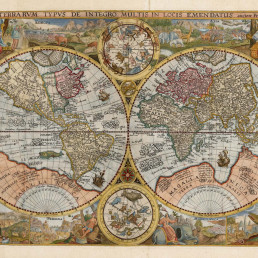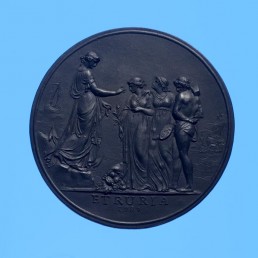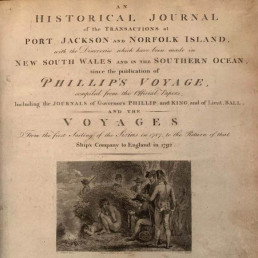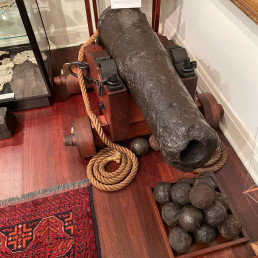
Name/TitleLe Kangourou de la Nouvelle Hollande. “Par M Petit – Ebauche”
About this objectOriginal pencil drawing by Nicolas-Martin Petit, an artist on Nicholas Baudin’s voyage of exploration to Australia in 1800-1804. Captioned on the reverse by the “geographer” (essentially the surveyor and cartographer) on the voyage, Charles-Pierre Boulanger, in his hand “Par M. Petit – Ebouche” (“By M Petit – sketch”). Despite being a talented artist, like many others coming into contact with kangaroos for the first time, Petit’s image is not very lifelike. Such images were not perfected until quite a few years later…
Baudin sailed from la Havre in October 1800 with a complement of twenty-two scientists, with a mission to explore the three-quarters of the coast of Australia not examined by James Cook and to study, record and recover specimens for the National Museum of Natural History. After the three official artists left the voyage at Mauritius, Nicolas-Martin Petit who joined the expedition originally as a gunner’s mater and Charles-Alexandre Lesueur, who had embarked as ‘private artist to the Commander’, were installed as official artists in their place. With Lesueur focused on the recording of landscape and species, the depiction of the people encountered fell largely to Petit, albeit this drawing of a kangaroo is by Petit, not Lesueur.
The expedition, ill-fated in many aspects, returned in 1804 without its commander who had died at Mauritius in 1803, but with an unexpected cargo of over one hundred thousand natural history specimens, 960 paintings or drawings by Lesueur, and Petit’s “large portfolio of drawings”. After surveying the western and southern coasts of the continent throughout the latter half of 1801, in early 1802 Baudin’s ships called at the D’Entrecasteaux Channel, Burney Island and Maria Island in Tasmania, and from June to November 1802 while in Sydney Petit completed portraits of people of the Cadigal, Dharawal, Gweagal, Kurringai and Darug language groups of the Sydney Harbour region.
MakerNicholas Martin Petit - Artist
Maker RoleArtist
Date Made1802
Period19th century
Medium and MaterialsPencil and paper.
Place MadeAustralia
Inscription and MarksOn verso: “Par M. Petit – Ebouche” (“By M Petit – sketch”)
Object TypeGeneral Interest
Object numberSF001743
Copyright Licence![]() Attribution - Non-commercial - No Derivatives (cc)
Attribution - Non-commercial - No Derivatives (cc)
Explore by category
Maps and Charts
Date range: 1541-1836
Ship Models
Date range: 1629-1890
Maritime Paintings
Date range: 1793-1849
Manuscripts and Ephemera
Date range: 1768-c1850
Medallions & Convict Tokens
Date range: 1619-1880
Landscapes
Date range: 1768-c1850
Books
Date range: 1694-c1850
Currency and Shares
Date range: 1624-1823
Printed Material
Date range: 1541-1836
Maritime Archaeology
Date range: 1629-1854
Curator's corner
New acquisitions, staff favourites and curios
The mug is decorated with an underglaze and a blue transfer print. On the body, it is titled ‘Emigrants to Australia’. This type of body and glaze was discontinued by 1840. Comparison of the handle shape and the profile of the foot, point to the attribution of manufacture by the Davenport Factory.
Delta was a ship-rigged vessel with two decks and three masts. It was built in Dordrecht, Netherlands in 1839 at the shipyard of Jan Schouten and registered in the same port. Its hull was constructed of oak and sheathed in ‘yellow metal’. Delta was owned by H. van der Sande at the time of its loss and was engaged as a cargo trader.
The Delta carried 29 crew and passengers, while sailing from Melbourne to Batavia in ballast when wrecked at Kenn Reefs on 30 May 1854 whilst under the command of Captain J.G. Kunst. This vessel loss supports the pattern of shipwrecks located on a well-travelled shipping route that was poorly charted until the mid-nineteenth century. The crew of the Delta could see four other shipwrecks at Kenn Reefs at the time of their vessel’s loss.
Important image of a ship associated with Matthew Flinders, that would shortly become one of the most famous early shipwrecks in eastern Australian waters. This is a fine ship’s portrait, by one of the great exponents of the art


















